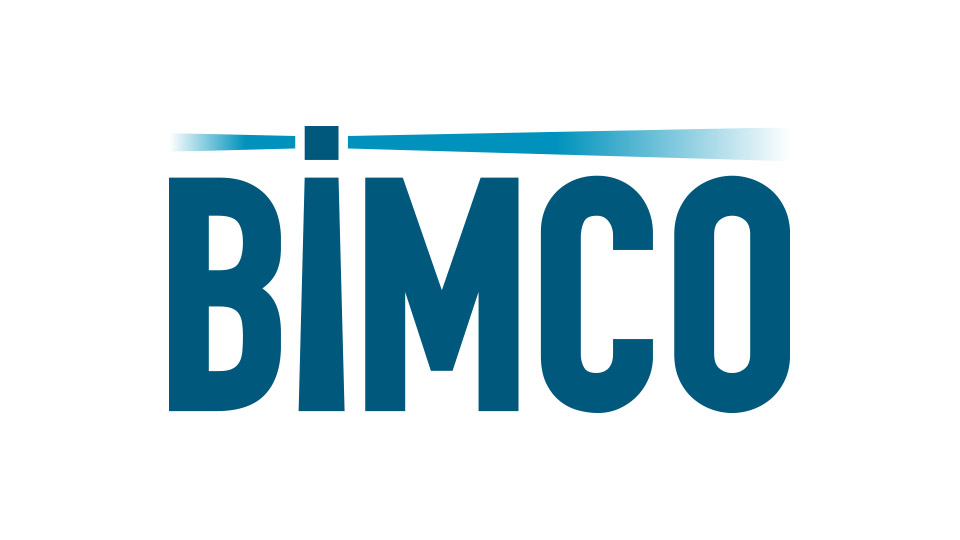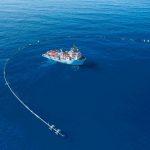The IMO aims to reduce the carbon intensity of shipping by at least 40% by 2030, and is pursuing a reduction of some 70% by 2050, compared to 2008 levels. To date the IMO has implemented a number of measures to steer the industry towards its climate goals on the reduction of greenhouse gasses, such as introducing the Energy Efficient Design Index (EEDI), and regulations for nitrogen oxides (NOx) and sulphur oxides (SOx). Last year the IMO adopted regulations to improve the efficiency of vessels. One of the new measures introduced was the Energy Efficiency Existing Ship Index (EEXI) which is primarily targeted at older and less efficient tonnage. Many have labelled it as the “ticket to trade” post 2023.
To assist the industry in managing their charterparty risks during the transition phase, BIMCO recently issued the EEXI Transition Clause for Time Charterparties, which is timely and helpful and therefore a welcomed clause. It is the first of a series of BIMCO’s carbon clauses. BIMCO will also be issuing clauses on Emissions Trading Schemes (ETS) and the Carbon Intensity Indicator (CII) regime. In this article we focus on the EEXI Transition clause and how it can be tailored to better suit parties’ intentions.
Setting the stage: Introducing IMO’s technical decarbonisation measure – EEXI
EEXI is an extension of the Energy Efficiency Design Index (EEDI) framework to bring the design efficiency of existing tonnage on par with new ships. It is a measure of the ship’s energy efficiency. A vessel’s EEXI is dependent on its design that is fixed, and not on any operational factors that may vary, for which there is another metric, CII (Carbon Intensity Indicator). EEXI in simple terms is CO2 emissions divided by transport work and is expressed in grams-CO2 / ton mile. A simplified formula is shown below.
Source: Bureau Veritas
Pathways to attaining EEXI
Like EEDI, EEXI is a non-prescriptive, performance-based mechanism leaving it to the owners, managers, and operators to decide which methodology to use to comply with the regulations. From the above formula, it is apparent that EEXI is a function of the
(a) installed engine power in the numerator, which is one of the most important parameters to determine EEXI; and in the denominator
(b) vessel’s speed, and
(c) deadweight.
Owners can choose to influence the numerator and/or the denominator to attain the required EEXI. Broadly speaking, the available energy efficiency measures fall into one of the following three categories:
1. Power optimisation, such as engine power limitation (EPL), Shaft Power Limitation (SHaPoLi) and engine derating to reduce the output power of the engine and consequently the vessel’s operating speed.
2. Installing energy saving devices or energy efficiency technologies to reduce hull resistance or improve propeller thrust, such as low friction coating, hull air lubrication system, wind assisted propulsion, waste heat recovery system and other innovative energy efficiency technologies (ref. IMO circular MEPC.1/Circ.896).
3. Engine modification for lower or zero carbon fuels, such as LNG and ammonia.
Compliance with the EEXI may require changes to the design of the vessel and/or machinery onboard. When deciding which countermeasures to adopt to meet the EEXI regulations owners would need to consider many different factors such as:
• Time required for installation;
• Costs involved;
• Payback time for the improvements installed;
• Age of the vessel and expected remaining trading life;
• Speed loss;
• Marketability of the vessel;
• And owners would need to ensure that any modifications carried out on the vessel will satisfy Charterers’ and terminals’ vetting policies.
ower limitation
As various classification societies have highlighted, such as DNV and Lloyd’s Register, the majority of the vessels are likely to adopt Engine Power Limitation (EPL) or Shaft Power Limitation (SHaPoLi) as such modifications are the least invasive and are less expensive faster to implement. This, however, may have a negative impact on the vessel’s speed. The older the vessel, the higher the power limitation required, which translates to a higher drop in maximum service speed.
• EPL: It is an overridable semi-permanent limit on ship’s maximum power, i.e. a reduction in the power delivered to the propeller and is one of the least intrusive methods. It can be in the form of a password protected software or a mechanical stopper to limit the amount of fuel to the main engine (ref: IMO Resolution MEPC.335(76)). Owners may need to collaborate with the engine maker and their classification society to ascertain if there will be any adverse effect on the engine, such as increased vibrations, when continuously operating at lower speeds.
• SHaPoLi: Ships with a multi engine setup may choose SHaPoLi, where a control unit will be fitted for calculation and limitation of the power transmitted to the propeller(s) by the shaft. This measure limits the shaft power instead of the main engine itself. Like EPL, it is a semi-permanent solution and crew will be able to use the unlimited or reserve shaft power when needed for safety.
Evidencing compliance
Impacted vessels will have to demonstrate compliance to their Flag State or recognised organization, i.e. the relevant classification society, by the first annual, intermediate or renewal survey for the International Air Pollution Prevention Certificate (IAPPC) on or after 1 January 2023. Following verification, an International Energy Efficiency Certificate (IEEC) will be issued and the EEXI technical file will be endorsed. Vessels built post 2013 are likely to have sea trial evaluated EEDI and this can be used to assess compliance with EEXI. However, for older vessels, the process will be less straightforward since all the required documentation may not be available, such as the original sea trial reports. In such cases, the IMO will use a statistical mean of distribution of ship speed and engine power to obtain an approximate reference speed (ref. IMO Resolution MEPC.333(76)). This method however imposes a penalty of up to 1 knot.
BIMCO EEXI Transition Clause for Time Charterparties (EEXI Transition Clause)
Taking a closer look at the EEXI Transition Clause, it is made abundantly clear that it is the owners’ duty to comply with the EEXI regulations when they are implemented in 2023.
The EEXI Transition Clause is largely focused on the most popular type of EEXI Modifications, which is power limitation or optimisation.
• The EEXI Transition Clause allocates the time and costs of installation required for power limitations and the process under which it can be carried out. Owners are to use reasonable endeavours to plan and carry out such modifications without any loss of time to charterers but are ultimately allowed to take the vessel out of service, if necessary, to carry out such modifications. Costs and time for such modifications to be carried out are on owners’ account. Owners are to give at least 3 weeks’ notice on the anticipated timeframe and location of such modification works.
• Once owners inform charterers of their plan for power limitation, charterers are obliged to provide the vessel’s itinerary to owners and to keep owners updated on any possible changes.
• Owners are required to provide charterers with the specification of the modifications and the estimated new performance warranties without any undue delay.
• After the implementation (and certification) of the modifications, owners are to notify charterers of the new maximum speed and consumption figures of the vessel, and if the new maximum speed and consumption figures are lower than the existing performances warranties in the charterparty, they will replace the existing performance warranties. Charterers are not to instruct the vessel to sail at a speed which exceeds the new maximum speed.
Finally, the EEXI Transition Clause provides that any other EEXI modifications, i.e. categories 2 and 3 as mentioned in the Pathways to EEXI paragraph above, are subject to the agreement and approval of charterers, not to be withheld unreasonably or delayed by charterers.
Refining the EEXI Transition Clause further
For owners or charterers who are looking at incorporating the EEXI Transition Clause into their charterparties, here are some non-exhaustive considerations to bear in mind during your discussions.
Energy efficiency technologies/engine modification
Owners, who are considering installing such technologies or carrying out engine modifications to burn low-carbon fuel, should negotiate for the right to carry out such modifications under the charterparty. The default position under the EEXI Transition Clause is that any modifications other than or in addition to power limitation are subject to charterers’ approval and agreement. Owners could remove the uncertainty of having to seek charterers’ agreement or approval for such modifications to the vessel.
It is in charterers’ interest to agree to a proposal for installation of such modifications, which will improve the vessel’s performance and efficiency. This will benefit long term time charterers. Not only will the carbon footprint be reduced, a more efficient and better performing vessel will directly affect the vessel’s Carbon Intensity Indicator (CII) rating, its tradability around the world and in particular, the emissions units required to comply with any applicable Emissions Trading Systems (ETS). Given the focus of many voyage charterers on reduction of GHG in their operations, the modifications to the vessel will no doubt increase its marketability – a clear incentive for the time charterer to cooperate with the owner in modifying the vessel to reduce carbon emissions.
Should charterers be inclined to agree, parties should discuss and agree on a process for such modifications to be carried out, including but not limited to the notice to be provided to charterers such that there is minimal disruption to charterers’ operations, costs of the installation and certification of the modifications and the accompanying off-hire from the time the vessel is no longer at charterers’ disposal until the vessel is redelivered back to charterers after the installation and certification of the modifications.
The installation of energy efficient technologies may also require parties to consider how the other charterparty obligations are affected, such as:
• Who owns the technologies and who is responsible for maintaining the same? If owners installed the technologies at their time and costs, it would form part of the vessel’s hull and equipment. If charterers contributed to the same, then parties will need to discuss how to account for the value of the technologies when the vessel is redelivered.
• If the technologies improve the vessel’s performance and efficiencies, parties should also consider updating the vessel’s warranties, including any efficiency warranties.
• What is the interplay with off-hire when the technologies break down? A breakdown in such technologies may not result in the vessel sailing at a reduced speed but it could affect the emissions for a specific voyage. Where charterers are responsible for the emissions for the voyages carried out (particularly when the vessel is sailing in a jurisdiction which is subject to an emissions trading scheme), parties will need to work out the formula to calculate the additional emissions caused by a malfunctioning technology on board the vessel.
Power Limitation
The EEXI Transition Clause is particularly useful for owners who are looking at power limitation as an option for EEXI modifications. In calculating the vessel’s updated speed and performance warranties, however, owners should pay attention to the type of limitation carried out and the effect on the vessel’s new service speed, particularly in light of the engine manufacturer’s recommendations.
Paragraph C(V) of the EEXI Transition Clause refers to “new maximum speed” after power limitation and provides that the “new maximum speed” will replace the existing warranted “maximum figures” if lower than the existing warranted maximum figures. Ordinarily, a vessel’s speed and consumption warranties in the charterparties are not based on the vessel’s maximum speed, but rather the operational or service speed for ballast and laden conditions. A vessel very rarely sails at its maximum speed for extended periods.
As an example, a vessel with a maximum speed of 13.5 knots may have its warranted service speed at about 13.0 knots without any power limitation. As previously discussed, an older vessel may require a relatively higher power limitation in order to comply with EEXI Regulations as compared to its younger counterpart in the same segment.
If the vessel’s new maximum operational or service speed after power limitation is below 13 knots as in Scenario B below (for older vessels), the owners will need to take into consideration the following before revising the vessel’s performance warranties:
(a) this new reduced operational speed; and
(b) the impact on the vessel and its engine, if any.
Ideally, the updated performance warranties should reflect the vessel’s new safe maximum operational or service speed. Another thing to bear in mind, for older vessels, is the possibility of the imposed speed penalty, as explained in the Evidencing Compliance paragraph above.
There have been some enquiries on whether the reduction in the vessel’s performance will allow a charterer to negotiate for a new hire rate. That is a commercial discussion for parties. The EEXI Transition Clause does not give charterers an automatic right to do so.
Simplified hypothetical scenarios showing how power limitation may or may not affect vessel’s operational speed
Key takeaways
1. Plan early: Shipowners have less than a year to go in order to ensure that their vessels comply with the EEXI Regulations. It is paramount that owners take steps to properly understand and ascertain the modifications which need to be carried out to the vessel in order to comply with the EEXI regulations. This requires a thorough discussion with all stakeholders, including engine makers and classification societies.
2. Collaboration is key: When negotiating new long-term time charterparties, parties need to have a discussion to prepare for the vessel’s upcoming EEXI modifications, if any. Compliance with the EEXI regulations will, at the end of the day, benefit all parties who are trading the vessel. Owners and charterers cooperated and collaborated to implement the MARPOL 2020 sulphur regulations. They will need to continue such cooperation to comply with the EEXI requirements.
3. Verify the figures: Once the modifications are completed, owners should carry out the necessary trials and calculations prior to updating the vessel’s performance warranties in the charterparty and this will require proper coordination internally between the shipowner’s commercial and technical management.
Source: Hellenic Shipping News






